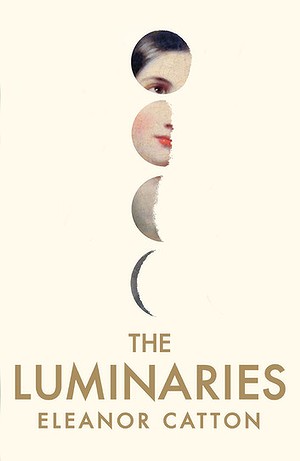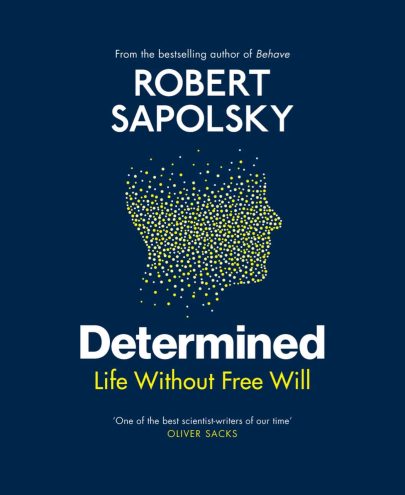Jan 6, 2014 Books

 Has Eleanor Catton invented a new form of literature? An illuminated manuscript for the age of the internet?
Has Eleanor Catton invented a new form of literature? An illuminated manuscript for the age of the internet?
I’m thinking of the astrological content of her smash-hit novel The Luminaries (Victoria University Press), which is no small thing. In her “Note to the Reader” she tells us she has followed an astronomical convention in determining the position of stars and planets, which has the effect of shifting our common understanding of the dates for each star sign. One month out. The implication is that she has taken the astrology very seriously and so should we.
From time to time in the book, events are explicitly described in terms of heavenly alignments and misalignments. More obviously, each section is preceded by an astrological chart and is roughly half the length of the one before – reflecting, we have been told, the waning of the moon.
It’s possible to treat those things as window dressing, but Catton’s astrological purposes are much more beguiling when it comes to her characters. Over the entire first half of the book she introduces us to 12 “stellar” men, who are collectively trying to solve what they believe is a murder. Each man corresponds to a star sign, which suggests that each acts in accordance with the supposedly true character astrologically determined for him at birth. Catton also lists seven other “planetary” characters and one who is categorised as “terra firma” (he’s dead, although we meet him alive when the action goes back in time). A score in all, with the eight latter characters presumably corresponding to the eight known planets of our solar system in the 1860s, when the story is set.
Roughly speaking, one can read The Luminaries as a story about the planetary characters and the ways in which the stellar characters act on them. Catton adheres to her astrological schematic so rigidly that an important 21st character (Margaret Shepard, wife of the gaol superintendent), is not listed on the “character chart” at all. Is she Pluto? Unlisted, unknown, and in the story misunderstood by almost everyone.
Of course, that’s a literary metaphor, not an astrological signifier, and I have no idea if Catton intended it. But it’s possible to read Margaret as a clue: the treatment of the character suggests that while Catton takes her astrology so seriously she has constructed a whole world around it, she is also playing with it.
How much is she playing? Do the stellar characters behave the way their star signs say they should? It’s not possible to know, simply by reading the book. Catton describes the behaviour and psychology of every character in considerable detail, but she does not tell you whether they align with the determinations of the heavens. For that, you have to go elsewhere.
Horoscopic information is easy enough to find online, but that’s got to be the least of what Catton is inviting us to do. I assume she’s looking forward to the growth of websites and social media forums that will attempt to unpack the story’s entire astrological import. I assume that for many people, reading this novel will be but a precursor to joining an online community of the faithful and revelling in the chance to plumb the arcane depths.
This is the new form I’m talking about. It’s not new in every sense – Trekkies were plumbing similar depths before there even was an internet, and entities as varied as Pride and Prejudice and Harry Potter have spawned big, complex online activities. But Catton has done something different from all of those.
The online stuff for The Luminaries won’t just explain the background world or provide spinoff games. Rather, while the work exists as a novel, it also has the potential to exist in parallel as a complete astrologically divined world. You could draw the story as a chart, if you knew your stuff.
And, she’s done it, not with some silly story, but a novel officially judged last year as the best by a writer from the Commonwealth or Ireland. It’s real literature.
And – here’s the kicker – she hasn’t actually produced that parallel world herself. Instead, she invites readers to do it. Literature, that elitist realm, has been handed to the populist, democratic realm of the internet.
And to spice it up, my guess is that she has fucked with us. Just a little. The novel presents a Hokitika in 1866 that is like the real one probably was, but not the same. It’s fiction: her invention. Catton’s horoscopes, I bet, are based on a similarly unique universe.
Which is right in line with astrology itself, of course, the beauty of which is that its quest for truth does not offer any reliable, rational hope of finding a right answer. Online fans of The Luminaries will be able to argue forever about the import of every character and every action, and their fidelity or otherwise to astrological lore, and whether Catton got it right and, if she didn’t, whether she meant to. They’ve got a quarter of a million words to puzzle over.
There’s genius in all that. I’m in awe.
But I’m not tempted to join the quest. I read the novel as a novel, and I look forward immensely to seeing it as a television series (yes, there’s a magnificent role for Robyn Malcolm if they don’t wait too long), but that’s all I want to do.
So the value of the horoscopes, for me, is not as a gateway to extra-novelistic activity, but is confined to what it brings to the literary work. Which turns out to be quite a lot. The book has the deep thematic purpose of most great stories: it explores the contest between fate and free will. Astrological predetermination and human purpose, if you like.
You can read it without knowing anything much about astrology (as I did) and come away still not wanting to know (as I did). But that won’t stop you marvelling at the way she has created a world in which, with all her characters and all the action, fate and will are held in balance like the floating arrow of a compass – and are just as liable, when the world is tipped by a sudden shock, to spin as wildly.
Twenty-one richly drawn characters, among whom every push and pull sets up collisions with the others, all wrapped up in a whodunit that is really a what-actually-did-they-do? And there’s more: wit, a great love story, masterful descriptions of the bush, the sea, the wildlife, the land. Gold-digger and settler life, on the West Coast and in Dunedin, so fully created you can feel the rain and mud. A writerly voice quite her own. A big, bold story of us. There is genius in all of that too.
Naturally, some things don’t work as well as they might. It’s hard to read 800 pages without flagging, at least a little: the pace of the novel subsides a little in the third quarter, although then it picks up and roars away to the finish. Near the finish, though, problems return. Those artificial lunar demands of structure, with each chapter waning in length from the one before, render the last 50 pages as a strangely jumpy collection of snippets.
Ah, but the wit is sly. The 12 stellar characters, for example, carry obvious echoes of the Apostles and of a jury. But when, late in the story, Catton presents us with a trial, she does so in the lively, adventurist tone of a caper movie. The 12 by this stage are one down (there is more than one murder in this tale), and the echo, quite wonderfully, is of Ocean’s Eleven. There’s a lawyer suddenly channelling George Clooney, and Brad Pitt could definitely find himself a role in this story.
The incidental pleasures of language are everywhere. We learn the origins of phrases like “pay dirt” and “small beer”. The tone is assuredly true to 19th century novels, although Catton has the good sense not to indulge in the frequent digressions that make Dickens a bit of a trawl. Her prose is supple, lean and yet relaxed; a description of the different landscapes of the West Coast, in a single long paragraph on page 370, is astoundingly sharp.
Despite the rough goldfield setting, nobody says a stronger word than “damn”, written as “d—” in the period style, until past page 200. That means, when we finally get a “f—“, it comes as a shock, which both accentuates the force of the swearing and underlines the nature of the man doing it – who is, naturally, the principal villain of the story.
He’s a big, barrel-chested, moustachioed man with a scar on his face: again, true to the period, Catton presents her characters as physical types. The more rotund they are, the more you know they are up to no good; the thinner they are, the more likely they are to be anxious. The angelic-looking youth with blond curly hair is indeed a good-hearted innocent.
One of the most remarkable things she does is keep us reading for a good 600 pages without engaging our sympathies very much for any of the characters. The stellar 12 and the planetary eight are all fascinating, but (with one exception) it doesn’t feel like we’re expected to warm to them. What this does is build the tension around that one exception: Anna Wetherell, the story’s much-put-upon opium-addled whore. Our heroine.
And yet, even while we long to know her true story, Anna is most strangely conceived. For much of the book she is a cipher, remaining obscure to us even as the story spins around her. She does little and remains apparently incapable of action on her own behalf. She’s a victim, and when we finally learn her story, that doesn’t change.
This doesn’t seem true to the 19th century ethos. Almost 170 years ago in Wuthering Heights, the great tragic heroine of Victorian literature was also a victim, but Cathy is undone in part by her own wilfulness. She has agency in her own story, as do most of the heroines, one way or another, of Austen, the Brontes, George Eliot et al. They’re not Katniss Everdeen, sure, but they do try to assert themselves. In The Luminaries, Anna is without will: the hapless, passive object of men’s use and abuse, and that is what readers are asked to identify with.
In this, though only in this, The Luminaries stands in the same tradition as another recent blockbuster: 50 Shades of Grey. You can argue that The Luminaries is a feminist novel because Catton has taken on – has owned – the world of men. But in the world of men, is this really where women have got to?
In more obvious ways, the book is not at all like 50 Shades: it’s way better written, and there’s no sex. There’s barely even a hint of sex. In fact, even when we need to know if sex has happened, in order to understand the story, it’s so barely glanced at we remain uncertain. Catton’s extreme reluctance to go there was presumably dictated by her commitment to the manner of a 19th century novel, but it’s annoyingly coy in a 21st century one and, perhaps worse, it undermines her otherwise scrupulous attempts at verisimilitude.
The gold-rush town of Hokitika is a place full of men where virtually the only women are prostitutes. Realising that Catton has decided not to bring the consequences of that alive is like watching Sons of Anarchy: a TV series about brutal criminals in which, because the series was made for US network television, no one swears. The invented world is a touch thinner than it ought to be.
Will The Luminaries make good television? Oh yes – and I don’t mean that at all disparagingly. With its plethora of furtive characters, brutally seductive setting and great, questing tale, it will be like the rambunctious frontier life of Deadwood meeting an intricately plotted Scandinoir thriller like The Killing in a world with all the pent-up violence, struggles for power and achingly romantic misadventure of Game of Thrones. With added sex, violence and swearing, it will make brilliant television.
But read it first: it’s a brilliant novel already and many of the literary qualities are untranslatable.
How brilliant is it? In our top five of the last 30 years, I reckon – like the other four, a great read that has something big to say to us and about us.
The others? Keri Hulme’s the bone people put a torch to the Ihimaeran school of sentimentality in order to fuse Maori and Pakeha, the mythic and the real, in a disturbing story that jump-started a whole lot of things in our contemporary culture. Maurice Gee defined the desperation and dignity of the suburbs (where most of us live) and of death (where all of us are heading) in Going West. Elizabeth Knox, with The Vintner’s Luck, smashed the barriers of regionalism: she knows you can do anything in New Zealand if you’re good enough, and with a story about an angel in 19th century rural France she showed us that world stories can be our stories. Lloyd Jones climbed on her shoulders (and on Hulme’s) with Mr Pip, locating us squarely in the Pacific with his own tale of inspiration and horror.
The Luminaries is not a moral guide and nor does it present a moral dilemma – what’s right and wrong for most of its characters is extremely clear, although that doesn’t stop many of them from choosing the wrong option anyway. It is, instead, an engrossing exploration of moral frailty.
And, after the first 600 pages, Catton does a truly marvellous thing. She takes us back to a year earlier than her main narrative to reveal the backstory: Anna finally comes to the fore, the tone becomes lyrical, the focus narrows to exclude almost everyone except the principal villains and the two characters who have become our protagonists, and the murder mystery is deftly turned into a love story. That section is such a joy to read.
As a taster, consider this: our hero begins his seduction of the girl by awakening the poet in her, on board ship at dawn, as they describe to each other the flights of albatrosses. What putative lover could ask for more? What New Zealand reader of a New Zealand tale could ask for more?
Catton’s most magnificent feat, though, comes right at the end, at the conclusion of those jumpy last few chapters. For 800 pages, she has immersed us in a world of depravity and despair, made us bear witness to the ravages of greed and human weakness and, sadly, forced us to accept just how fleeting the aspirations of young love can be. And then she deposits us right back at the point where love is at its most hopeful and most naïve, and asks us: despite all we now know, don’t we still think those aspirations are the best thing in the world? Fate and will, held in perfect balance.





